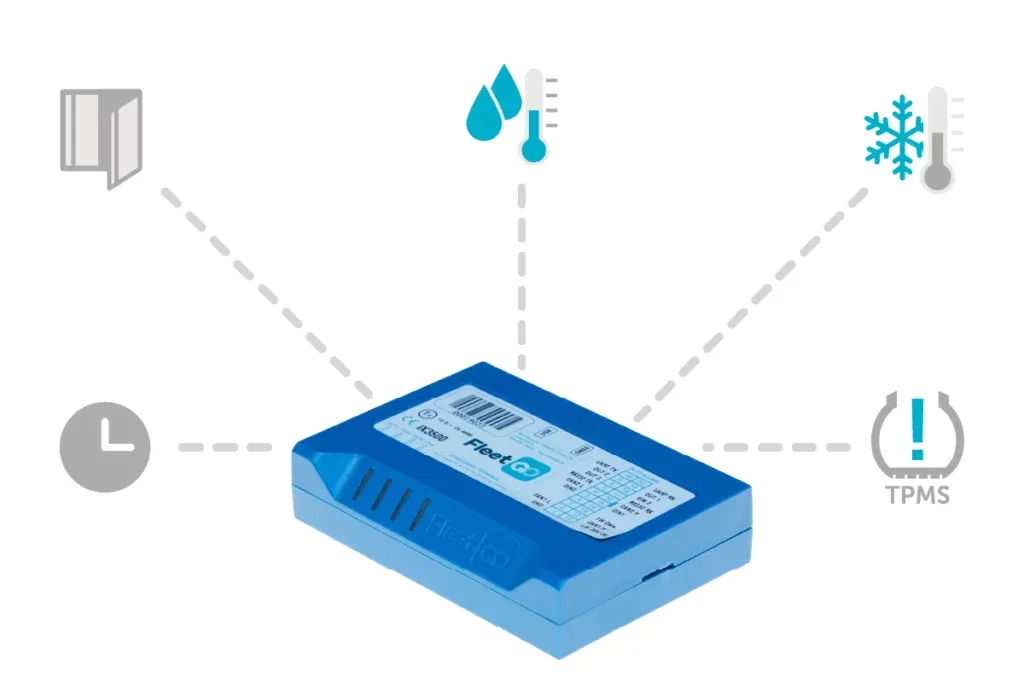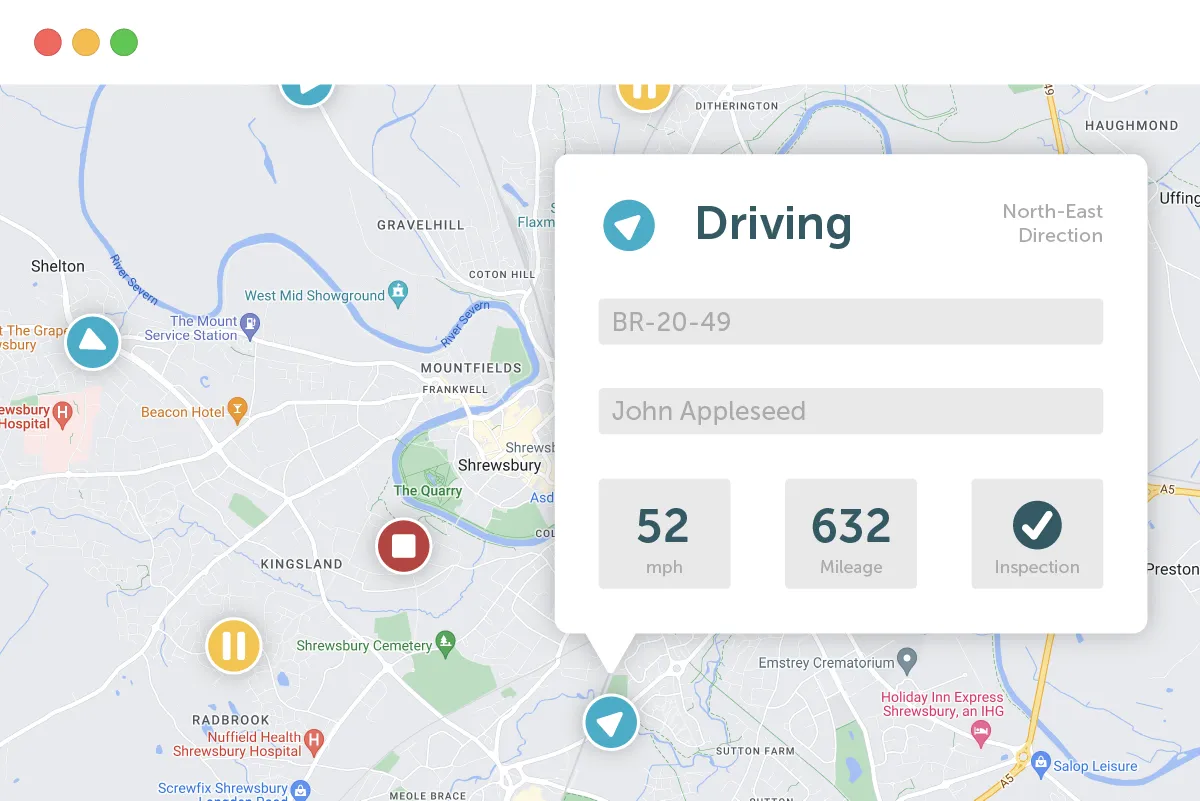A telematics box collects information about drivers’ behaviour and driving. It is commonly used in commercial and emergency vehicles to inform the fleet manager of drivers’ habits and potential risks. The telematics box uses GPS technology and onboard diagnostics to plot the movement of a truck and record various metrics. All the data collected from the vehicle is recorded in the black box plugged into the OBD II or CAN-BUS port. Some telematics devices have modems and SIM cards to facilitate communication on a cellular network.
Telematics is significant in the logistics sector since its deployment facilitates the management of vehicles and drivers. Fitting company vehicles with telematics boxes gives fleet managers better insight into every part of their operations. Here’s a detailed guide on what telematics black boxes do and how to install one.
What Is a Telematics Black Box?
A telematics box is a small device that monitors and records a driver’s performance. The electronic device is fitted to a vehicle. Telematics generally measure driving behaviour and produces a score for various driving habits. For instance, it measures a driver’s braking, cornering, speed and acceleration. The box can also monitor when a vehicle is driven and the location. That means it can act as the vehicle location device. However, a telematics black box doesn’t have control over the vehicle. Hence, it doesn’t affect a driver’s braking and acceleration.

A telematics black box monitors a vehicle’s movements using GPS technology and onboard diagnostics to collect data. Since it reports every detail associated with driving, the data provides valuable information that can promote cost saving on maintenance through better monitoring of vehicles. The information is also useful for fuel efficiency and improving driver behaviour.
Start Tracking Your Fleet
Get started with Fleet Tracking from FleetGO. You will have a complete overview of your fleet. See the GPS location of your drivers in real-time and optimes your operations.
Manage your Fleet on the GO

What Does a Telematics Box Look Like?
A telematics black box is fitted behind a vehicle’s dashboard. The telematics system has the following key parts:
GPS tracker
It monitors a vehicle’s location and can provide a clear map of the exact movements of a car. Fleet managers can use the information to track the routes commercial vehicles have used and the duration it took to get there.
Sensors
A telematics box has sensors hooked to various car parts to collect additional information. The sensors measure steering inputs, throttle and braking. The fleet company can use additional sensors if it needs to collect extra data.
Mobile data connection
A telematics box has modems and SIM cards to relay data back to the vehicle management system. Mobile data connections allow the transmission of data to any device. The box uses a radio network or mobile connection, while some telematics can connect via satellite.
What Does a Telematics Box Record?
A telematics box collects data from the vehicle to inform the fleet manager of the daily operations. The information collected by telematics systems includes:
- Speed
- Driver inputs
- Fuel consumption
- Vehicle faults
- Idling time
- Driver inputs
- Harsh braking and driving
- Trip distance and time
- Battery voltage
Data from the telematics black box is collected in real time or can be downloaded manually. Sending the data to the fleet management software facilitates analysis. The data can be used to generate drivers’ performance and identify improvement areas. For instance, a driver with a poor score may require additional training to minimise risks and promote productivity.
With the advancement of data analytics and machine learning, fleets can get further use of telematics data. For instance, a transportation company can use benchmarking to measure the performance of its fleet and evaluate the routes for better optimisation.
Start Tracking Your Fleets
Get started with Fleet Tracking from FleetGO. You will have a complete overview of your fleet. See the GPS location of your drivers in real-time and optimes your operations.
Manage your Fleet on the GO

What Is the History of the Telematics Box?
In the UK, the earliest devices for recording information in vehicles were the tachographs, which became mandatory for commercial vehicles in 1986. While the telematics system was already in existence, it was utilised in military communication and tracking asset movements. Telematics and informatics were merged with the Global Positioning System (GPS) development. The improvement in GPS and Wi-Fi infrastructure is encouraging the resurgence of telematics devices.
The initial black boxes relied on connecting them to the vehicle’s onboard diagnostics system. Under the EU mandate in 2001, all European vehicles had to be fitted with OBD ports. The main purpose of the directive was to allow real-time tuning of fuel-injected engines. Nowadays, OBD-II ports allow monitoring of infotainment and diagnostic sensors. The growing interest in telematics black boxes was due to their usage by insurance companies to evaluate a driver’s risks. Fleet managers rely on black boxes to track drivers’ behaviour and location.
What Does a Telematics Box Do?
A telematics smart box gathers data and gives drivers a score. The score is regularly updated to reflect the changes in driving style. Aside from assisting in regulating driver behaviours, a telematics box helps fleet managers save money. For instance, it provides alerts and warnings when there are faults in the vehicle. A fleet manager can train drivers to improve their driving and reduce the costs associated with reckless driving.
What Are the Benefits of Telematics Box Installation?
Having a telematics box installed in the company’s fleet has numerous benefits. For instance, insurance companies offer discounts to commercial vehicles with black boxes. Other advantages include the following:
Reduced fuel costs
Black boxes provide GPS systems information that improves route planning. Fleet managers can rely on data from the software to identify efficient routes, minimise time spent in traffic, and cut out unnecessary working hours and mileage.
Safer driver behaviour
Black box sensors pick up information on the driver’s behaviour, like accelerating or braking harshly. The data analysed in the fleet management software evaluates the drivers’ scores and provides driving tips or training to improve their safety. Making drivers aware that their driving style is monitored also changes their behaviour; it encourages them to take fewer risks, like steering erratically or speeding.
Improved maintenance
Since a telematics box is connected directly to a car’s main computer, it can access and collect information about the vehicle. Any error codes and diagnostics flagged by the sensors are transmitted to the fleet management system. Viewing data on wear and tear in real time ensures the maintenance is scheduled on time. Setting up systems based on time, engine use, or mileage is more accurate than relying on manual tracking of vehicle management systems.
How To Fit a Telematics Box
Most telematics black boxes are self-installed, but there are also professionally fitted black boxes. A self-fitted telematics box is connected to the car’s power source using a port and can be placed in front of the windscreen. Professionally fitted telematics boxes are fitted behind the dashboard.
Conclusion
Telematics is an essential technology in fleet management. That’s why commercial vehicles must install telematics boxes to collect data and assist in decision-making. Learning the driver’s behaviour helps fleet managers find ways to reduce fuel consumption, determine the driver’s speed and optimise working hours. A telematics black box improves route planning, optimising fuel costs and ensuring driving hours compliance.
Sources:
Disclaimer
This content is provided for informational purposes only and is not meant to be an endorsement or representation by FleetGO.com or any other party. This information may contain inaccuracies or typographical errors, despite our efforts to ensure accuracy. FleetGO.com accepts no responsibility or liability for any errors or omissions, and is not responsible for the contents of any linked website or any link contained in a linked website. Please refer to our full disclaimer for more details.


